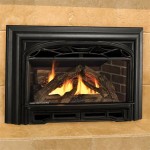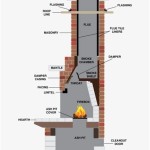Redoing Fireplace Tile: A Comprehensive Guide
The fireplace often serves as a focal point in a living space, providing warmth and aesthetic appeal. Over time, however, the tile surrounding the fireplace may become outdated, damaged, or simply no longer align with the homeowner's design preferences. Redoing fireplace tile presents an opportunity to revitalize the hearth and transform the overall ambiance of the room. This guide outlines the essential steps and considerations involved in successfully replacing fireplace tile, ensuring a durable, attractive, and safe result.
Planning and Preparation
Prior to commencing any physical work, careful planning is crucial. This phase involves assessing the existing fireplace structure, selecting appropriate replacement tile, and gathering the necessary tools and materials. Failure to adequately prepare can lead to unforeseen complications and project delays.
The initial step involves a thorough inspection of the existing fireplace surround and hearth. This includes identifying any structural issues, such as cracks, loose brickwork, or water damage. Addressing these underlying problems is paramount before installing new tile. Ignoring structural deficiencies can compromise the integrity of the new tile installation and potentially pose safety hazards. If significant structural issues are detected, consulting with a qualified mason or contractor is advisable.
Accurately measuring the area to be tiled is essential for determining the quantity of tile required. It is recommended to add an additional 10-15% to the total square footage to account for cuts, breakage, and potential installation errors. This ensures that there is sufficient material to complete the project without having to make a second purchase that may not match the original batch.
Selecting the appropriate tile is a critical decision. Fireplace surrounds are exposed to high temperatures, so it is imperative to choose tile specifically rated for fireplace use. Common options include ceramic tile, porcelain tile, natural stone (such as slate or granite), and specialized fireplace-rated tiles. Each material offers different aesthetic qualities and performance characteristics. Ceramic and porcelain tiles are generally cost-effective and offer a wide range of design options. Natural stone provides a more luxurious and distinctive look but may require more maintenance and can be more expensive. Tile selection should also consider the overall style of the room and the desired aesthetic effect.
Furthermore, selecting the appropriate mortar and grout is just as important as choosing the right tile. The mortar should be specifically designed for high-temperature applications and should be compatible with the chosen tile material. Grout should also be resistant to heat and staining. Epoxy grout is a durable and stain-resistant option, but it can be more challenging to work with than cement-based grout. Selecting the correct color of grout is also important for achieving the desired aesthetic.
Finally, gathering the necessary tools and materials is a practical step towards a smooth installation. This typically includes a tile saw (wet saw), notched trowel, grout float, sponge, measuring tape, level, safety glasses, gloves, and a dust mask. Having all the necessary tools readily available will minimize interruptions and streamline the installation process.
Removing Existing Tile
The removal of the existing tile is a potentially messy and labor-intensive process. Careful execution is necessary to avoid damaging the underlying structure and to ensure a clean surface for the new tile installation.
Protecting the surrounding area is the first step. Drop cloths or plastic sheeting should be used to cover the floor and furniture to prevent damage from dust and debris. This will significantly reduce the amount of cleanup required after the tile removal is complete.
Wearing safety glasses and gloves is essential throughout the removal process. Old tile can shatter easily, and the dust generated can be irritating to the eyes and respiratory system. A dust mask is also recommended to minimize inhalation of dust particles.
Several methods can be used to remove existing tile. A hammer and chisel can be effective for prying off individual tiles. A flat pry bar can also be used to lift larger sections of tile. For larger areas, a power chisel or demolition hammer may be necessary. When using power tools, exercise caution to avoid damaging the underlying brickwork or concrete. The goal is to remove the tile and mortar without causing significant damage to the substrate.
After the tile is removed, the underlying surface must be thoroughly cleaned. All traces of old mortar and adhesive must be removed to ensure a proper bond with the new tile. A scraper, wire brush, or grinder can be used to remove stubborn residue. The surface should be clean, dry, and free of any loose particles or debris. In some cases, it may be necessary to apply a bonding agent to the substrate to improve adhesion. This is particularly important if the surface is porous or has been damaged during the tile removal process.
Dispose of the old tile and debris responsibly. Tile is generally considered construction waste and should be disposed of according to local regulations. Renting a dumpster or arranging for waste removal services may be necessary, depending on the volume of debris.
Installing New Tile
The installation of new tile requires precision and attention to detail. Proper alignment, spacing, and bonding are crucial for achieving a professional-looking and durable result.
Dry-fitting the tile before applying mortar is a critical step. This involves laying out the tile on the floor or fireplace surround to determine the best layout and to ensure that the cuts are planned correctly. This allows adjustments to be made before the tile is permanently installed. It also helps to visualize the final appearance of the tiled surface.
Mixing the mortar according to the manufacturer's instructions is essential. Adding too much or too little water can affect the mortar's consistency and bonding properties. The mortar should be mixed to a smooth, creamy consistency that is easy to spread and adheres well to the tile and substrate.
Applying the mortar evenly with a notched trowel is crucial for ensuring proper adhesion. The size of the notches on the trowel will determine the thickness of the mortar bed. The appropriate trowel size will depend on the size and type of tile being used. Apply the mortar in small sections, working one area at a time. This prevents the mortar from drying out before the tile is installed.
Setting the tile carefully and ensuring proper alignment is paramount. Use tile spacers to maintain consistent spacing between the tiles. A level should be used to ensure that the tiles are installed flat and even. Gently press each tile into the mortar bed, ensuring that it is fully seated and making good contact with the mortar. Remove any excess mortar that squeezes out between the tiles. This will make the grouting process easier and prevent the grout from being discolored by the mortar.
Cutting the tile to fit around corners and edges requires precision. A wet saw is the most effective tool for cutting tile. It provides clean, accurate cuts and minimizes the risk of chipping or cracking the tile. Safety glasses should always be worn when using a wet saw. When cutting curved or irregular shapes, a tile nipper may be necessary.
Allowing the mortar to cure completely before grouting is essential. The curing time will vary depending on the type of mortar used, but it is generally recommended to wait at least 24-48 hours. This allows the mortar to fully harden and bond with the tile and substrate.
Grouting the tile involves filling the spaces between the tiles with grout. Mix the grout according to the manufacturer's instructions. Apply the grout evenly using a grout float, working diagonally across the tile surface. Press the grout firmly into the joints, ensuring that they are completely filled. Remove any excess grout from the tile surface with the grout float.
Cleaning the tile surface with a damp sponge is crucial for removing grout haze. This process should be done shortly after the grout has been applied, while it is still relatively soft. Rinse the sponge frequently with clean water. Several passes may be necessary to completely remove the grout haze.
After the grout has fully cured, apply a grout sealer to protect it from staining and moisture. The curing time will vary depending on the type of grout and sealer used, it’s best to follow the manufactures instruction. This is particularly important in areas that are exposed to water or spills. The grout sealer will help to prevent the grout from becoming discolored or damaged over time.

110 Diy Fireplace Makeover How To Paint Tile Jessica Welling Interiors

How To Paint Tile Easy Fireplace Makeover Setting For Four Interiors

Diy Fireplace Makeover At Home With The Barkers

Fireplace Makeover Stacy Risenmay
5 Amazing Inexpensive Easy Fireplace Remodel Transformations Designed

6 Lessons From Our Tiled Fireplace Makeover The Lived In Look

The Tile Journal Of Hamilton In Woodstock Ga

Tiling A Fireplace Surround Surrounds Home Decor

Our 200 Fireplace Makeover Marble Tile A New Mantel Young House Love

How To Paint Fireplace Tile Diy Makeover A Blossoming Life
Related Posts








